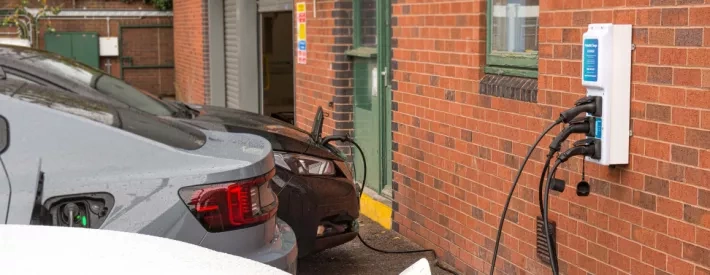Six ways to make sure your business is EV charging ready

As electric vehicles gain traction businesses will need to start offering charging facilities, but how do you get the technology installed. Here’s six things to consider
Site survey
Once you’ve decided to install EV chargers at your workshop, whether for staff or customers, the first thing you need to do is contact a charge point operator to conduct a site survey (surveys from two or three operators will enable you to get the right advice and compare costs).
An operator can offer guidance on the right hardware and charger speeds for your workshop’s needs, and suggest the best locations for chargers. But more importantly, for workshops with their own electrical needs, an operator will assess your site’s maximum electrical capacity and the space capacity (the difference between actual load used and the maximum available). Based on this information, it can advise on any capacity upgrades or groundwork that might be required and assess the need for any load balancing to support any additional electrical load from the chargers.
Permissions
If your workshop is leased, you’ll have to ask the landlord for permission before installing charge points. Your lease might contain clauses relating to improvements to the site, which is what a charger would constitute, so most landlords are likely to approve.
Planning permission to install a charger at your business premises is usually not required, unless you’re near a major highway or based in a listed building.
Installation
Once you start to look, you’ll find that there are plenty of operators and installers willing to hook you up to a charger. Choose your installer well, opting for an experienced specialist, if at all possible.
The cost will depend on factors such as the distance between the charging station and the meter at your business premises, the ground surface (if you need to start digging, the costs will be higher) and the length of underground cabling.
Electricity connection costs are another factor. Locating a charger to make use of an existing connection will save the cost of setting up a new one.
An important consideration for workshops that already have high demand for electricity is load balancing. This will not only prevent any danger of overloading the electrical connection, but it should also help to lower connection fees and peak tariffs.
How many chargers?
Deciding to install a chargepoint now means that you could actually be getting ahead of a statutory need to install one.
The EU Energy Performance of Buildings Directive (EPBD) – to which the UK is a signatory – ensures that all non-residential buildings with more than 20 car parking spaces will need to have at least one charging bay by 2025. New non-residential buildings and those undergoing a ‘major renovation’ with more than 10 car parking spaces will be required to have chargepoints.
And, as EVs increasingly get serviced and maintained in workshops, chargers will be useful for courtesy top-ups top before handing cars back to customers. That means you will have to consider the power supply to your premises and its ‘available capacity’. Exceeding this could result in incurring excess availability charges.
Types of charger
Charging technology is advancing rapidly, but that doesn’t mean you should be looking at installing the latest 150kW chargers – not least because sticking a few of those outside your workshop will require you to build a new substation, at a cost of around £100K.
Much more sensible – and practical – is to look at basic 7kW units. Yes, they’re relatively slow, but plugging in for a few hours or overnight will do the job.
Managing chargers
Most of the current chargepoint manufacturers can offer back-office reporting software that allows businesses to monitor chargepoint and energy usage, and CO2 reductions in real time. If you have chargers that are used for customer vehicles as well employees, an access code will ensure that only approved vehicles can charge, or that employees and visitors are charged differently.




